Absolute Frequency of Rubidium Optical Clock without Frequency Modulation
Chi-Hsiang Chu, Yu-Jhe Shin, Yi-Ting Lin*, Wang-Yau Cheng
Abstract
We have measured the clock transition of rubidium. Using the cross-over frequency locking method developed by our team, we have achieved frequency-stabilized and frequency-scanning system only using one 778 nm laser. Moreover, we used a Helmholtz coil to reduce the influence of the Zeeman shift and learned about the coefficient of 87Rb 5S 1/2(F = 2) → 5D 5/2(F = 4) is −48.9 ± 2.6 kHz/G. We also build a vacuum system (~ 〖10〗^(-7) Torr) to measure Rb self-collision shift and found that the linear coefficient is −120±70 Hz/µTorr. Furthermore, the Allan deviation of our system can reach 3×〖10〗^(-13) within 1000 seconds of integration time. Finally, we have measured the rubidium 5S 1/2 (F = 3) → 5D 5/2(F = 1 ∼ 5) transition and only ±5 kHz difference between our results and the suggested value of Certificate in Investment Performance Measurement(CIPM).
Set up
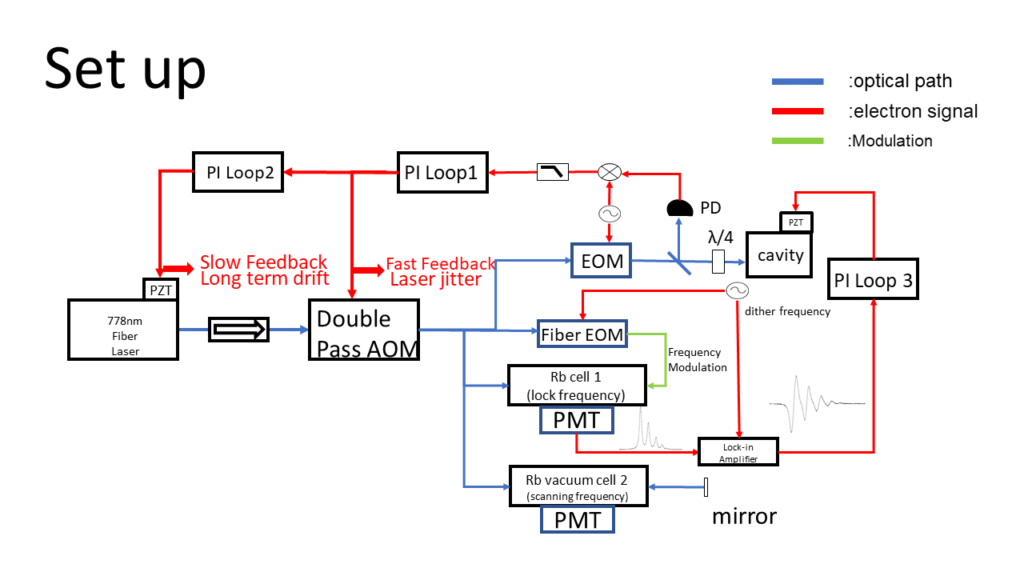
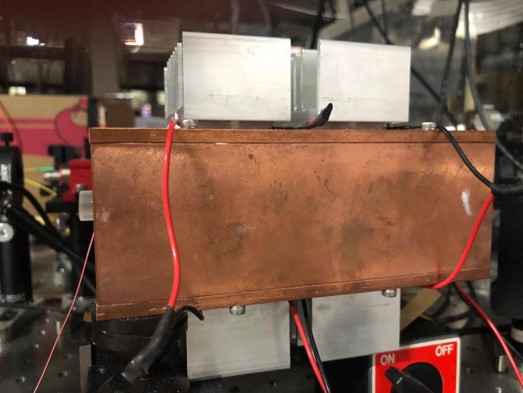
We choose Invar, a metal with a low coefficient of thermal expansion as the material for our cavity. The specific heat capacity and the thermal conductivity of Invar is lower than cropper and difficult to control temperature. We use temperature controller to control the temperature and stabilize the length of the cavity.
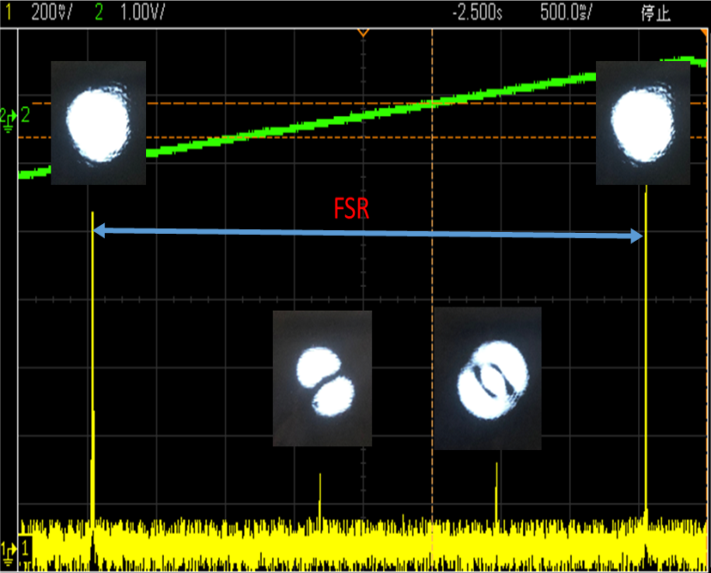
Finesse=6281,FSR=986.15 MHz
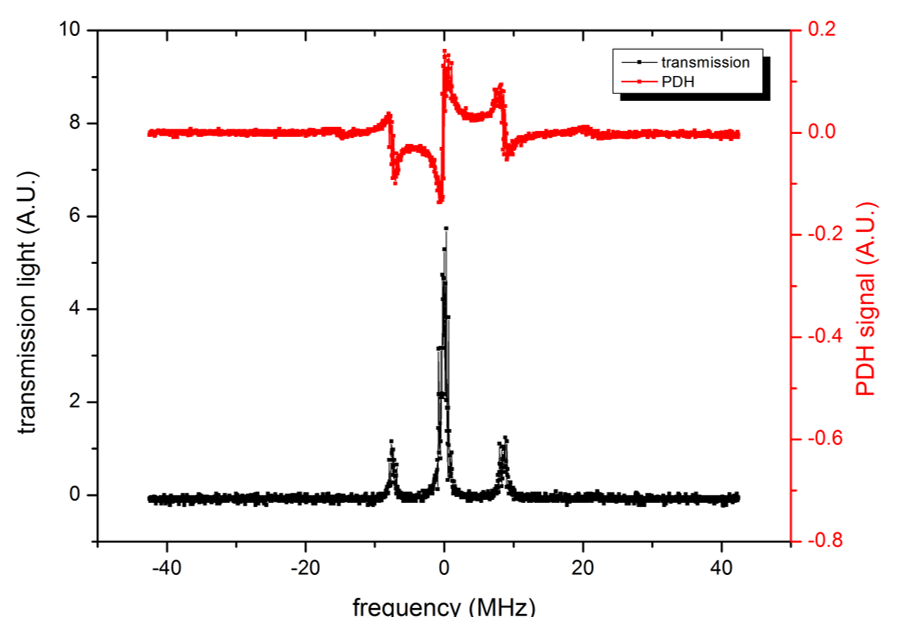
PDH frequency lock is to feed back the high-frequency signal within 30kHz to
AOM, and the low-frequency signal below 100Hz frequency drift feed back to the laser PZT.
Frequency locking and scanning system
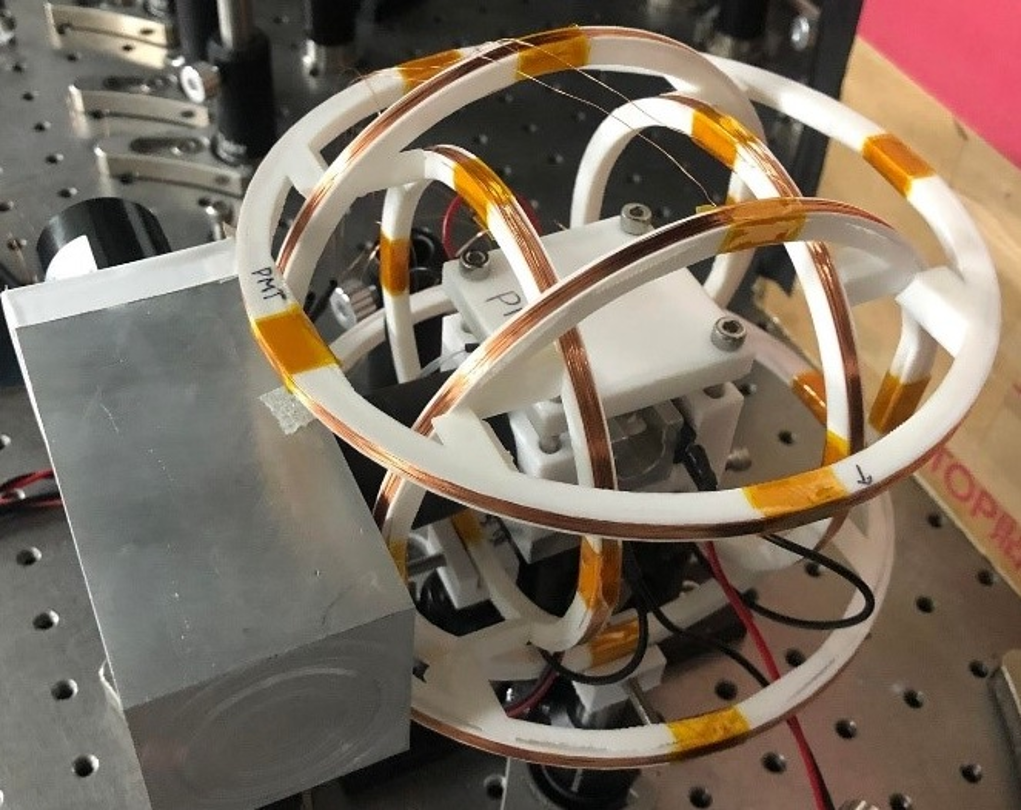
Use Helmholtz coil to produce zero magnetic field to remove Zeeman shift influence.

Since the absolute frequency value obtained in Fig.(4) has a gap with CIPM, we suspect that the frequency shift is caused by collision shift, so we made a vacuum chamber to measure.
Crossover

Our group found that if you have a laser frequency f and another optical path uses Fiber EOM to modulate
its frequency to F+f, we found that their cross over has a certain probability at the frequency of (F+f)/2
make atom transit, we call it cross-over spectroscopy.
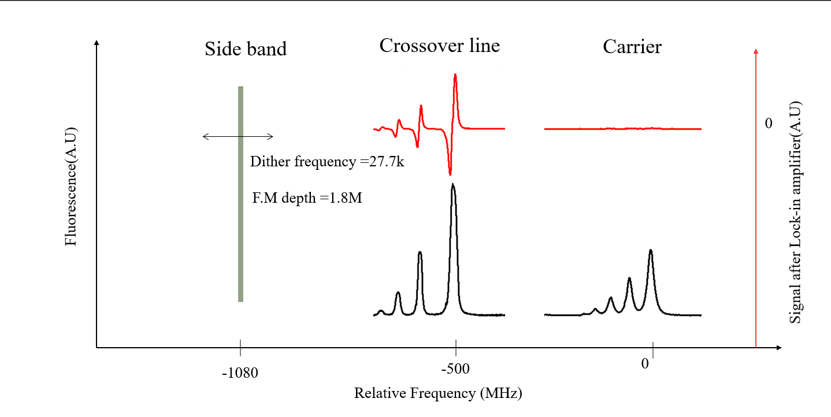
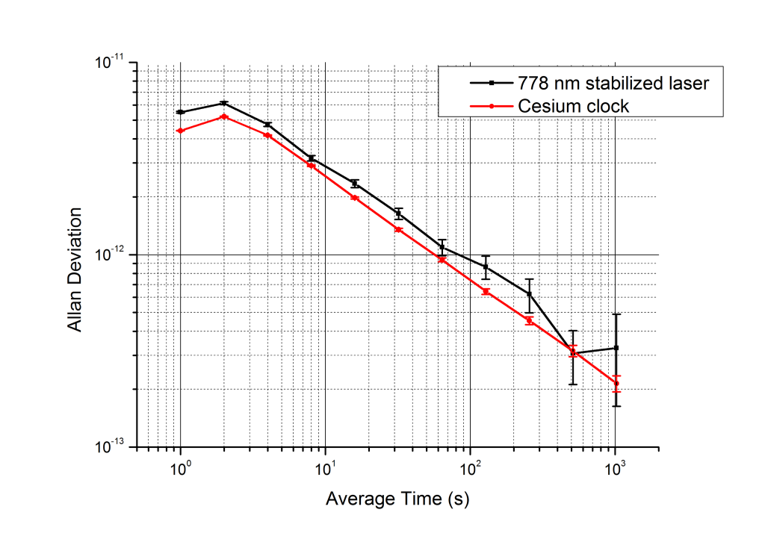

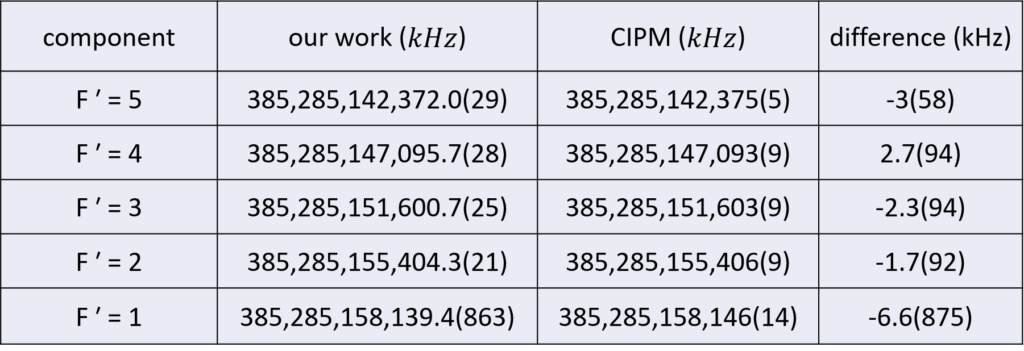
conclusion
(1.)We successfully confirmed by measurements in vacuum Rb chamber that our previous difference in absolute frequency measurements came from frequency shifts caused by gases of different elements
(2.)We use only one 778nm Fiber laser to perform frequency sweep and frequency lock at the same time through the cross-over spectroscopy.
(3) The rubidium atomic optical clock we made has a stability of 5 × 〖10〗^(-12) within 1 second integral time, reaching 3 × 〖10〗^(-13) within 1000 second of integration time.